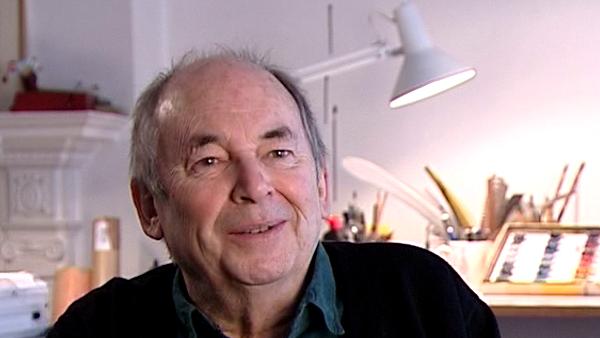In… when was it? 1986, I started to retire from the RCA over two years, I just diminished my time, faded out, and from there… and I think that gave me a bit more energy to do… to put in to these books of my own. And some of them are entertainments, as it were, I mean strictly Mrs Armitage on Wheels, I mean they're, sort of, accumulative things, which then collapse at the end. Some of them have got a bit more substance in them, in a way, and I think they're books that are available to a slightly wider… they're not necessarily for the smallest readers, and I think the first one that I did like that was called The Story of the Dancing Frog, which is about a mother telling a story to her child, and it's about one of their relations of former times who discovers a frog that can dance, and how they take it on the stage, and what happens. In a sense it doesn't have an end, because they, you see them eventually retire to the south of France, the now elderly lady and the elderly frog, I suppose. And it's… it's the things that happen on the stage are funny. It's funny to see, we hope, to see a frog dancing, but there is a sort of framing device of the parent telling the child the story, which is in sepia, so you know that it’s a different time and a different situation, that's the real bit, rather than the fantasy bit. And it's partly about stories, and it's partly about what… well, I suppose it's about what you do in a difficult situation, if you're bereaved, or something like that, how do you cope with that? And in a sense, the implication is, well, one way you do something about it is by telling stories, and it's about what stories are about. Not everybody got that idea, and I remember there was one review that said it would have been better without this person telling the story. But in fact it… that was the purpose of it, in a way, and why it's called The Story of the Dancing Frog, and not The Dancing Frog. And that seemed to have… a bit more, sort of, substance in it, in a way.






